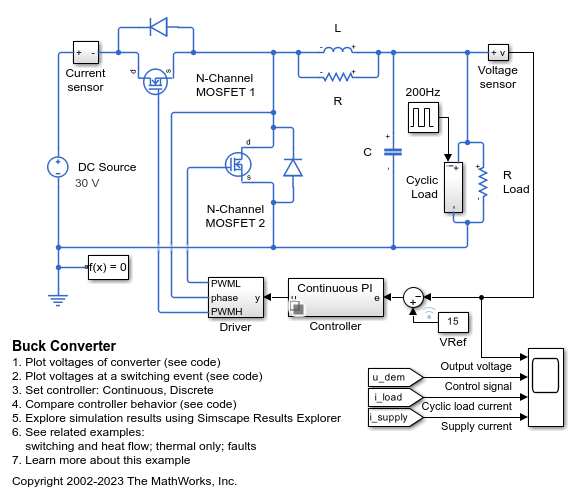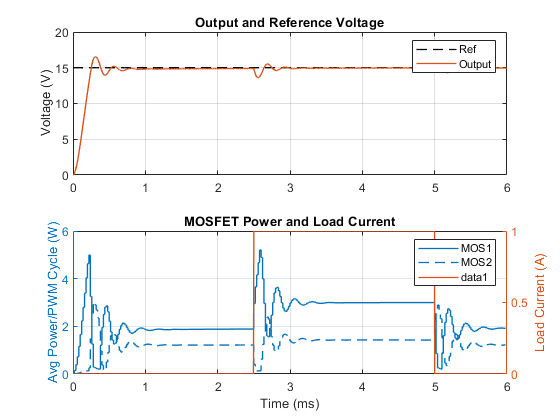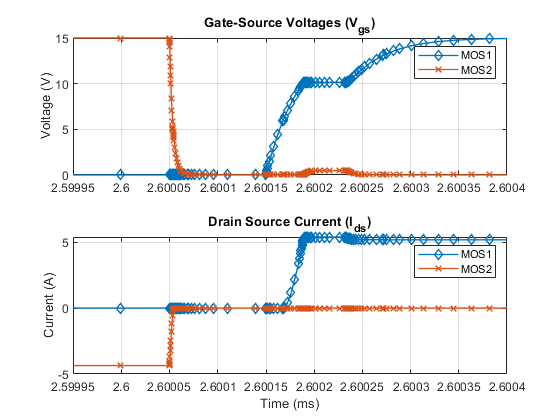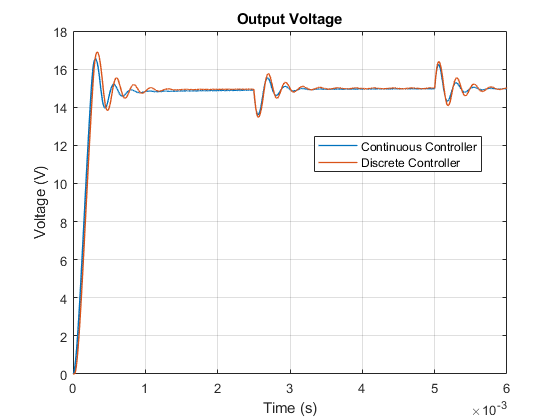降压转换器
此示例展示了如何对将 30V DC 电源转换为 15V DC 稳压电源的开关电源进行建模。使用此模型确定电感 L 和平滑电容器 C 的大小,并设计反馈控制器。在连续控制器和离散控制器之间进行选择,以探索离散化的影响。
将开关器件建模为 MOSFET 而非理想开关,可确保此模型准确体现器件的导通电阻。此模型还能捕获器件的导通/关断时序,此时序主要取决于栅极电容值和 PWM 驱动器输出电阻。
有关此模型的抽象版本(该版本使用理想开关来缩短仿真时间),请参阅具有热动态特性的降压转换器示例。您可以使用此示例中的模型确定理想开关所需的导通电阻值,必要时还可以确定定时偏移。要对更复杂的功率转换器进行仿真,可使用 BuckThermalDynamics 模型的理想开关方法。
工作区变量 T_junction1 和 T_junction2 定义模型仿真两个 MOSFET 时的温度。BuckThermalDynamics 模型和 BuckThermal 模型确定这些温度。
模型

来自 Simscape 记录的仿真结果
下图显示了输出电压和参考电压之间的比较。该图还显示了变化的负载电流以及两个 MOSFET 在 PWM 周期内的平均耗散功率。

下图显示了两个 MOSFET 的导通/关断时序以及漏极-源极电流。

下图显示了 PI 控制器的不同实现的行为。

另请参阅
N-Channel MOSFET | Controlled PWM Voltage | Half-Bridge Driver